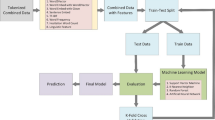Abstract
In the historical context of the current development of the world's open education system, education and Internet information technology are closely integrated, not only important ways to achieve quality education resource sharing, but also the inevitable needs of promoting education system. With the China Internet of Things terminal, the reliability index of the intelligent terminal is improved. In the existing network, a specific task migrate from the Internet to the cloud, which not only increases the load on the network, but also introduces a large number of data transmission. Extension. The moving edge calculation introduced in the fifth generation mobile communication technology network can effectively solve the above problems. Voice means that people use language information between speaking and hearing, and transmit, and communicate. Nowadays, college English classroom teaching requires both the development trend of online education, but also needs to face the pros and cons of MOOC resources in the process of networked teaching. MOOC launched a challenge to the traditional teaching concept and organization of Chinese traditional teaching. In the face of the arrival of MOOC storms, China's higher education can re-establish high-quality resource sharing mechanisms, explore innovative teaching models, which is expected to improve college classroom teaching levels. As an important online teaching resource is also favored by the majority of teachers and students, it can be supplemented by teaching before class and class.






Similar content being viewed by others
References
Bazarbayeva ZM, Zhalalova AM, Ormakhanova YN et al (2016) Intonational Division of a speech flow in the Kazakh language. Int J Environ Sci Edu 11(10):3669–3678
Chai R, Lin J, Chen M et al (2019) Task execution cost minimization-based joint computation offloading and resource allocation for cellular D2D MEC systems. IEEE Syst J 13(4):4110–4121
Fang T, Yuan F, Ao L et al (2021) Joint task offloading, D2D pairing, and resource allocation in device-enhanced MEC: a potential game approach. IEEE Internet Things J 9(5):3226–3237
Ichimura Y, Suzuki K (2017) Dimensions of MOOCs for quality design: analysis and synthesis of the literature. Int J Edu Media Technol 11(1):42–49
Islam MS, Zargar A, Dyck R et al (2012) Data fusion-based risk assessment framework: an example of benzene. Int J Syst Assur Eng Manag 3(4):267–283
Kramsch C (2014) Language and culture. AILA Rev 27(1):30–55
Liu X, Zheng J, Zhang M et al (2021) A novel D2D–MEC method for enhanced computation capability in cellular networks. Sci Rep 11(1):1–20
Moritz N, Adiloğlu K, Anemüller J et al (2017) Multi-channel speech enhancement and amplitude modulation analysis for noise robust automatic speech recognition. Comput Speech Lang 46:558–573
Rasheed RA, Kamsin A, Abdullah NA et al (2019) A systematic mapping study of the empirical MOOC literature. IEEE Access 7:124809–124827
Santandreu Calonge D, Aman Shah M (2016) MOOCs, graduate skills gaps, and employability: a qualitative systematic review of the literature. Int Rev Res Open Distrib Learn IRRODL 17(5):67–90
Stracke CM, Trisolini G (2021) A systematic literature review on the quality of MOOCs. Sustainability 13(11):5817
Wang K (2020) Migration strategy of cloud collaborative computing for delay-sensitive industrial IoT applications in the context of intelligent manufacturing. Comput Commun 150:413–420
Wang H, Ke H, Liu G et al (2020) Computation migration and resource allocation in heterogeneous vehicular networks: a deep reinforcement learning approach. IEEE Access 8:171140–171153
Zheng Y, Yang RY (2017) The rise of MOOCs: The literature review of research progress and hot spots of MOOCs education in mainland China. Eurasia J Math Sci Technol Edu 13(9):6165–6174
Funding
The study and all authors have not received any funding.
Author information
Authors and Affiliations
Corresponding author
Ethics declarations
Conflict of interest
The author reports no conflicts of interest.
Ethical approval
This article does not contain any studies with human participants performed by any of the authors.
Informed consent
Not applicable.
Additional information
Publisher's Note
Springer Nature remains neutral with regard to jurisdictional claims in published maps and institutional affiliations.
Rights and permissions
Springer Nature or its licensor (e.g. a society or other partner) holds exclusive rights to this article under a publishing agreement with the author(s) or other rightsholder(s); author self-archiving of the accepted manuscript version of this article is solely governed by the terms of such publishing agreement and applicable law.
About this article
Cite this article
Chen, X., Li, H. Speech detection in english MOOC online teaching platform based on edge calculation. Int J Syst Assur Eng Manag (2023). https://doi.org/10.1007/s13198-023-02029-5
Received:
Revised:
Accepted:
Published:
DOI: https://doi.org/10.1007/s13198-023-02029-5




